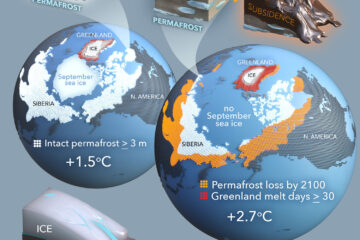Patterns of bryophyte succession in a 160 year chronosequence in deciduous and coniferous forests of boreal Alaska
Bryophytes are dominant components of boreal forest understories and play a large role in regulating soil microclimate and nutrient cycling. Therefore, shifts in bryophyte communities have the potential to affect boreal forests’ ecosystem processes. We investigated how bryophyte communities varied in 83 forest stands in interior Alaska that ranged in age (since fire) from 8 to 163 years and had canopies dominated by deciduous broadleaf (Populus tremuloides Michx. or Betula neoalaskana Sarg.) or coniferous trees (Picea mariana Mill B.S.P.). In each stand, we measured bryophyte community composition, along with environmental variables (e.g., organic layer depth, leaf litter cover, moisture). Bryophyte communities were initially similar in deciduous vs. coniferous forests but diverged in older stands in association with changes in organic layer depth and leaf litter cover. Our data suggest two tipping points in bryophyte succession: one at the disappearance of early colonizing taxa 20 years after fire and another at 40 years after fire, which corresponds to canopy closure and differential leaf litter inputs in mature deciduous and coniferous canopies. Our results enhance understanding of the processes that shape compositional patterns and ecosystem services of bryophytes in relation to stand age, canopy composition, and changing disturbances such as fire that may trigger changes in canopy composition.


